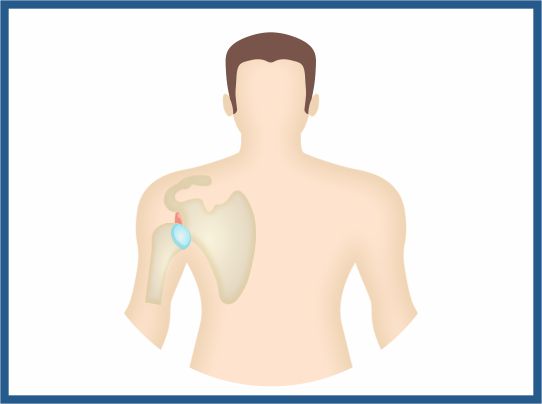The term ‘shoulder instability’ is used to refer to the inability to maintain the humeral head in the glenoid fossa.
Shoulder instability means the shoulder joint is too loose and can slip too far in the socket. The weak shoulder does potentially fall out of the socket in some situations. If the shoulder slips out of the socket completely it has dislocated. If untreated, instability can lead to shoulder joint arthritis.
Shoulder instability develops in two different ways: traumatic (injury related) onset and atraumatic onset. Traumatic onset instability begins when an injury causes a shoulder to develop recurrent (repeated) dislocations. The patient with Atraumatic instability has general laxity (looseness) in the joint that eventually causes the shoulder to become unstable.
Shoulder dislocations can be partial, with the ball of the upper arm coming just partially out of the socket. This is called a subluxation. A complete dislocation means the ball comes all the way out of the socket. Once the ligaments, tendons, and muscles around the shoulder become loose or torn, dislocations can occur repeatedly.

Causes
There are three common ways that a shoulder can become unstable:
Shoulder Dislocation Severe injury, or trauma, is often the cause of an initial shoulder dislocation. When the head of the humerus dislocates, the socket bone (glenoid) and the ligaments in the front of the shoulder are often injured. The labrum — the cartilage rim around the edge of the glenoid — may also tear. This is commonly called a Bankart lesion.
Repetitive Strain Some people with shoulder instability have never had a dislocation. Most of these patients have looser ligaments in their shoulders. This increased looseness is sometimes just their normal anatomy. Sometimes, it is the result of repetitive overhead motion. Looser ligaments can make it hard to maintain shoulder stability. Repetitive or stressful activities can challenge a weakened shoulder. This can result in a painful, unstable shoulder.
Multidirectional Instability In a small minority of patients, the shoulder can become unstable without a history of injury or repetitive strain. In such patients, the shoulder may feel loose or dislocate in multiple directions, meaning the ball may dislocate out the front, out the back, or out the bottom of the shoulder. This is called multidirectional instability. These patients have naturally loose ligaments throughout the body and maybe "double-jointed."
Symptoms
- Pain caused by a shoulder injury
- Repeated shoulder dislocations
- Repeated instances of the shoulder giving out
- A persistent sensation of the shoulder feeling loose, slipping in and out of the joint, or just "hanging there"
Treatment
Treatment
Nonsurgical Treatment
- Activity modification
- NSAIDS
- Physical Therapy- Strengthening shoulder muscles and working on shoulder control can increase stability.
Surgical Treatment
- Surgery is often necessary to repair torn or stretched ligaments so that they are better able to hold the shoulder joint in place.
- Arthroscopy. Soft tissues in the shoulder can be repaired using tiny instruments and small incisions.Arthroscopy is a minimally invasive surgery.
- Open Surgery- This involves making a larger incision over the shoulder and performing the repair under direct visualization.

